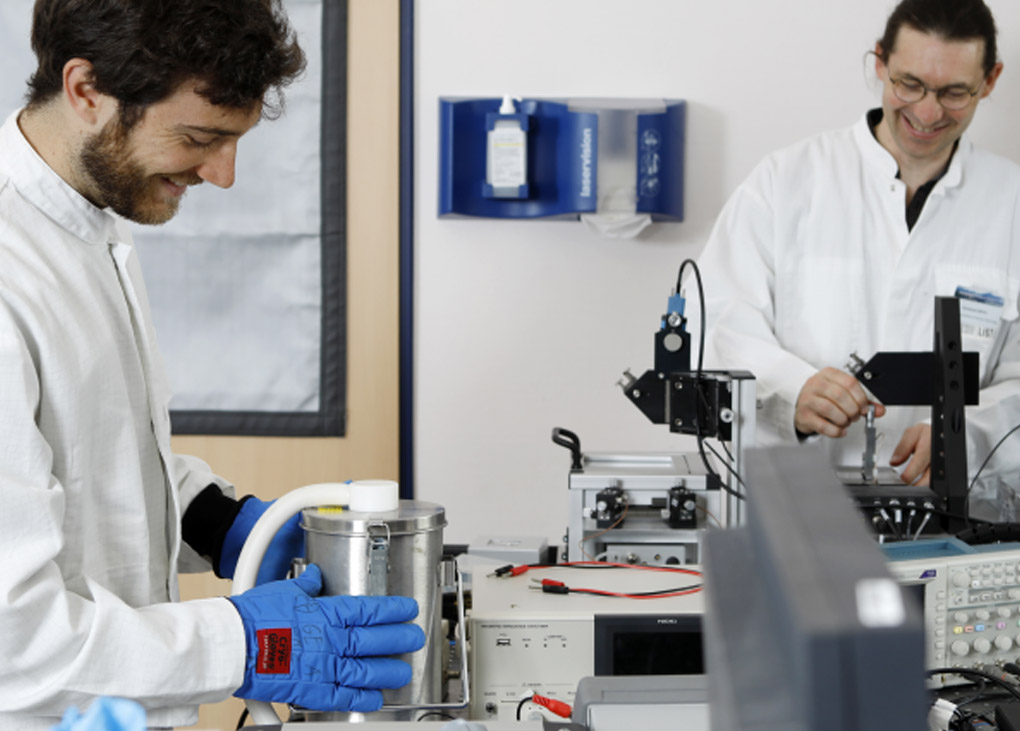Scientists have created a prototype of a heat pump from a ceramic with a strong electrocaloric effect. It uses the ceramic and electric fields to heat up when exposed to electric fields – and has the potential to replace a standard heat pump, which uses refrigerants.
The team, from the Luxembourg Institute of Science and Technology (LIST) in Belvaux, recently published details about their project in Science. According to LIST, approximately one-fifth of the world’s electric energy is used by refrigeration, and this technology could offer an energy-efficient and eco-friendly solution.
Dr Emmanuel Defay, who leads the Nanotechnology unit within the Materials Research and Technology (MRT) department at LIST, has been working with his team on electrocaloric materials for several years.
He explains the cooling principle of this technology is based on what is called the electrocaloric effect, which occurs in a few insulators.
“Applying voltage on these materials induces a slight change in the way the atoms are ordered,” he says.
“This change of order (or change of entropy) creates a change in the temperature of the materials. This change of temperature is not permanent; it is shot of heat when voltage is applied and a shot of cold when voltage is released.”
The team uses a fluid that collects these heat and cold shots. The movement of this fluid is synchronised with the moment one applies voltage, such that heat and cold accumulate in different parts of the device.
“This principle, called regeneration, transforms a temporal temperature variation in a space temperature gradient,” says Defay. “The latter is the engine of our future coolers or heat pumps.”
Defay says there are three main advantages of electrocaloric cooling compared to traditional heat pump or cooling, which are based on vapour compression systems:
- There is no need for refrigerant gas exhibiting a strong global warming effect
- There is no need for a large and noisy compressor
- Energy efficiency can be as high as the best vapour compression systems.
The team’s most recent breakthroughs in the technology include greater energy efficiency and scale-up solutions. They have been actively working with companies to explore practical ways to implement the technology.
There are two main hurdles the team needs to overcome for the technology to be deployed commercially. First, Defay says electrocaloric devices have to be water-compatible.
“For the moment, we are using a fluid that has poor thermal properties but which can sustain voltage,” he says.
Using water as the heat-carrying fluid would enable gaining one order of magnitude in cooling power with the same device, making it the best cooling technology competing against vapour compression.
The second issue is that the material they are using is based on Scandium and Tantalum – two materials that are scarce and very expensive.
“We have to find alternative materials with equivalent properties,” says Defay. “We and other teams in the world are on the verge to propose convincing candidates.
“The deployment of this technology will then mostly depend on investment, considering that it brings about a lot of hope for the future of refrigeration. I would say that a time frame between five to 10 years does not sound too silly for a commercial exploitation, if we do a good job.”
Feature image courtesy of the Luxembourg Institute of Science and Technology.



Leave a Reply